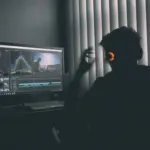Do you have any phobias? Discover what systematic desensitization is and how this technique can help you.

Systematic desensitization is a technique that was developed by Joseph Wolpe in 1958. Since its creation, it has been widely used for the treatment of different anxiety disorders, among which specific phobias stand out, such as, for example, phobias of blood, hospitals, airplanes, animals, and driving. , to storms, etc. It has proven to be one of the most effective techniques to reduce irrational fears, phobic disorders and anxieties associated with specific stimuli.
What is systematic desensitization?
Systematic desensitization (or SD) is a technique used by therapists that aims, in general terms, to confront fears gradually, through approximations to the feared elements. It is a behavior therapy technique, also widely used in cognitive behavioral therapy. The DS is based on a principle called reciprocal inhibition which states that there are stimuli that automatically produce anxiety responses and claims that these same stimuli also automatically generate responses that are incompatible. An incompatible response is one that cannot occur at the same time as anxiety, such as relaxation. Therefore, if the person is trained to emit relaxation responses to anxiety stimuli this anxiety will be weakened and, therefore, will not avoid certain situations either.

What is the procedure?
This technique can have different application variants and its procedure will vary depending on the type of desensitization that is being used. In this case, we will explain the steps of systematic desensitization in imagination:
- Selection and/or development of the incompatible response: The most used incompatible response has been relaxation since it is easy to learn, effective and quick to apply. However, other answers can be chosen that meet these requirements. In the case of applying the systematic desensitization in children For example, the imagination of nice images like the visit of a heroine or a superhero. Be that as it may, if the person does not have any relaxation resources or any incompatible response, a prior training process will be carried out.
- Creating a hierarchy: Once the incompatible response is known and trained, the person will be asked to order the feared situations according to the degree of anxiety they produce. To do this, a scale from 0 to 100 is used, where 100 is the most feared situation. For example, a girl who has a phobia of injections may show 0 anxiety when being near a hospital, a value of 50 when seeing a nurse, and 100 for the injection itself. In this way, exposure to the feared stimulus is done gradually.
- Imagination evaluation and training: It is essential that before starting the technique, the person’s imagination capacity is evaluated with the aim of verifying that the person is really capable of realistically imagining the situations of the hierarchy and that they truly cause anxiety since otherwise the technique it would have no effect.
- Systematic desensitization process: Once the previous steps have been completed, we move on to the application itself. This is based on presenting the stimuli of the hierarchy according to the previously established order, starting with the one that generates the least anxiety. This will be done when the person is practicing the incompatible response and the presentation will be done in different sessions until the last scene in the hierarchy can be reached.

What types of systematic desensitization are there?
As I have already mentioned before, there is no single way to apply the technique but, depending on the characteristics of the person, the phobia and the resources, one variant or another will be chosen. The best known are:
- Live: This variant is characterized because the application of the stimuli of the hierarchy does not happen in the imagination but is presented in a real way. However, the basis remains the same, presenting the stimuli of the hierarchy while emitting the incompatible response. Being in the real context, it has a very clear advantage and that is that the reduction of anxiety occurs in the individual’s daily context. However, in certain cases, such as in the case of fear of storms, it is impossible to apply this format since a control stimulate that is, you cannot adjust the intensity or its presentation.
- In imagination: It involves the exposure of the feared stimulus by imagining the scenes. For this it is important to see the person’s imaginative capacity. During the process, the subject must develop a mental image that is as vivid as possible that is similar to the situations that generate anxiety. It involves imagining specific scenes and asking you to give great detail. Little by little changes are made to the imagined image until different and realistic scenes are created.
- In a group: As its name already indicates, it is characterized by applying the technique in a group, generally, four to six people who have the same problem or phobia. Given this, you may wonder how the hierarchy mentioned above would be created. The answer is that the therapist must be able to create a hierarchy with which all the components of the group can be identified and the rhythm of presentation of the stimuli will adapt to the person who advances most slowly, that is, until all the people have stopped feeling anxious about a certain stimulus will not be continued. Although this form is not very individualized, it has the advantage of reducing time and has shown good results.
- Through virtual reality: The advancement of technology has led to new ways of applying certain psychological techniques. In this case, the presentation of the stimuli is done through virtual reality. The only requirement is that this presentation must be realistic. However, this variant is the least used since its application method has a higher economic cost than other formats.
- Enriched: Enriched systematic desensitization is characterized by imagining the scenes of the hierarchy but with the difference that in this case, physical stimuli such as smells, noises, etc. are incorporated. For example, in the case of storm phobia, the sound of rain could be used so that the person can better imagine the situation.
What is it for?
This technique has been used to treat different disorders such as:
- Specific phobias: This technique is considered to be one of the most effective for the treatment of specific phobias as long as the person does not have more than four different ones. Examples of specific phobias that are usually treated with this technique are phobia of exams, social phobia, phobia of dental procedures, phobia of flying on an airplane, phobia of medical exams, phobia of heights (or acrophobia ), etc.
- Gambling addiction disorder: This technique has been used to treat gambling addiction. Specifically, it has been proven that the imagination variant is effective in reducing the symptoms of this disorder. Specifically, the person is asked to imagine those situations that he considers may prompt him to play while a relaxation response is emitted.
- Nightmares: According to the cognitive-behavioral approach, nightmares could be related to anxiety disorders. Specifically, this technique would be applied through hierarchies with the content of dreams. However, it was found that the intensity of nightmares responded better to relaxation training and that the benefit of systematic desensitization occurred more in the long term.
Systematic desensitization should always be applied by a psychologist since exposing yourself to phobic stimuli without the help of a professional can end up being counterproductive. It is for this reason that it is important that for the treatment of any psychological disorder we go to a professional who can accompany us in this process.








